A Gem Hunter’s Guide to Georgia’s Hidden Treasures: Ultimate Guide
Georgia, often hailed as the “Peach State”, is also a treasure trove for gem enthusiasts. With a rich history of gem mining that traces back centuries, Georgia beckons both amateur and seasoned prospectors. In this guide, we’ll unearth the sparkling gems of Georgia, the prime locations to find them, and how you can embark on this gem of an adventure.
The Most Popular Gemstones in Georgia
Georgia, with its rich geology, is a hub for gemstone enthusiasts, presenting a delightful mix of both common and rare gemstones. Here’s a closer look:
Rare Gemstones Found in Georgia
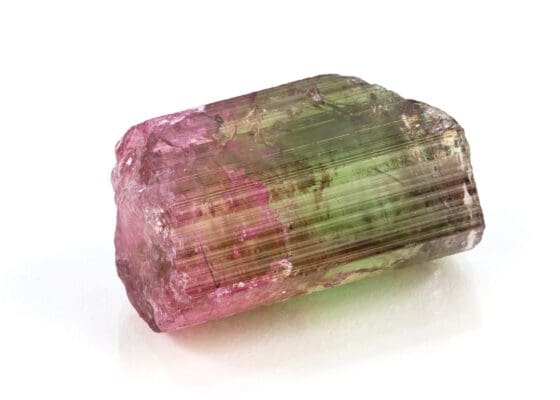
| Gemstone | Description |
|---|---|
| Tourmaline | Often multi-colored, tourmaline from Georgia is known for its vibrant green and pink hues. |
| Sillimanite | A brown or pale green gem, sillimanite is prized for its cat’s eye effect. |
| Staurolite | Famously known as ‘fairy crosses’ because of its cross-like twin crystals. |
| Blue Garnet | A rare variation of garnet that appears blue-green under specific lighting conditions. |
| Rhodolite | A rose-red variety of garnet, rarer than the more common deep red types. |
Common Gemstones Found in Georgia
| Gemstone | Description |
|---|---|
| Quartz | Versatile and abundant, quartz in Georgia is found in clear, smoky, and amethyst varieties. |
| Ruby | Deep red precious stones, they are often found in the Northern mountains of Georgia. |
| Garnet | Typically deep red, these are often found in riverbeds and mountainous areas. |
| Beryl | Though less common than quartz, beryl varieties like aquamarine (blue) can be found in Georgia. |
| Mica | A shiny silicate mineral prevalent in Georgia’s mountains. |
| Gold | While not a gemstone, gold is a notable and frequently found mineral, especially in the Dahlonega region. |
| Amethyst | A beautiful purple variety of quartz, with some significant deposits in Georgia. |
| Rose Quartz | Pinkish in hue, this quartz variety is commonly found throughout Georgia. |
| Moonstone | These stones have a characteristic shimmer and can be found in various parts of Georgia. |
| Kyanite | A blue-green mineral, often used as a gemstone, that is found in the Northern parts of Georgia. |
The vast range of gemstones in Georgia ensures that every hunt can yield something beautiful, be it a common quartz piece or a rare blue garnet!
Top 10 Gem Mining Locations in Georgia
- Consolidated Gold Mine, Dahlonega: Located in the heart of Georgia’s gold country, this mine not only promises gold but also an array of gemstones, particularly quartz crystals. Operating hours generally run from 10 am to 5 pm, with an admission fee ranging from $10-$20, depending on the chosen activity.
- Crisson Gold Mine, Dahlonega: A historic site rich in gold, it’s also a place to pan for gemstones. They operate daily from 10 am to 6 pm, with gold panning starting at $10 and gemstone panning at $15.
- Graves Mountain, Lincolnton: Famous for its rutile, pyrophyllite, and lazulite, Graves Mountain is a haven for rare gem enthusiasts. The site occasionally hosts “Rock Swap and Dig” days which are free, but donations are encouraged.
- Outpost Gold & Gem Panning, Helen: Located in the charming town of Helen, this spot offers gem panning, ensuring everyone leaves with a gemstone. They’re open daily, usually from 10 am to 6 pm, with fees starting at $10.
- Gold’n Gem Grubbin’, Cleveland: Set on the site of a historic gold mine, prospectors can sluice and pan for gold, rubies, sapphires, and more. They’re open from 10 am to 5 pm on weekdays and 10 am to 6 pm on weekends. Prices range from $10-$100 depending on the package.
- Gemstone Factory Gold Panning, Sautee Nacoochee: Known for its extensive gemstone variety, including emeralds and garnets, they are generally open from 11 am to 5 pm. Panning bags range from $8-$50.
- Cohutta Cove Mini Golf and Gem Mine, Blue Ridge: Perfect for families, the site pairs gem mining with mini-golf. They’re open from 10 am to 8 pm during the summer, with gem mining buckets priced from $15-$100.
- Dukes Creek Gold & Ruby Mines, Sautee Nacoochee: A beautiful spot where you can pan for gold and gemstones overlooking the scenic Dukes Creek. They operate daily from 10 am to 4 pm, with gemstone buckets starting at $12.
- Wagon Wheel Ranch Gem Mining, Milledgeville: This location offers a mix of gem mining, horse riding, and other activities. Their hours vary seasonally, so it’s best to call ahead, but gemstone bags start at $8.
- Tellus Science Museum, Cartersville: While primarily a museum, Tellus offers a gem panning experience reminiscent of the gold rush era. Open from 10 am to 5 pm daily, gem panning is included with the museum admission fee, which is $15.95 for adults.
Each of these locations offers a unique glimpse into Georgia’s gem and mineral wealth, ensuring an adventure filled with shimmering possibilities.
History of Gem Mining in Georgia
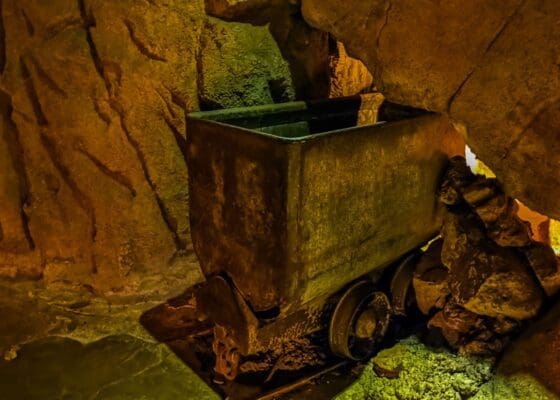
Georgia’s gem mining history is a tale woven with dreamers, discovery, and, of course, dazzling gemstones. Nestled in the southeastern part of the United States, the state boasts a diverse geological makeup, providing a fertile ground for a plethora of minerals.
The story of gem mining in Georgia primarily intertwines with the gold rush of the 1830s in Dahlonega. As the rush of settlers and miners flocked to the state, they were not just in pursuit of the alluring yellow metal. In their ambitious quest, miners often stumbled upon a treasure trove of other gemstones, sparking an interest in more than just gold. The mountains, which were a primary source of gold, began revealing deposits of garnets, quartz, beryl, and other gemstones, establishing Georgia as a diverse mineral producer.
While places like Dahlonega became synonymous with gold mining, areas in Northern Georgia, such as Ellijay, began emerging as prominent sources of rubies and sapphires. By the late 19th century, several areas in the state had commercial mining operations targeting not just gold, but also these precious and semi-precious stones.
One particular gemstone that caught attention during these mining endeavors was the staurolite crystals, commonly referred to as ‘fairy crosses’ or ‘fairy stones.’ Local legends and Native American myths surrounded these unique twin crystals, with stories suggesting that they were tears shed by fairies upon hearing the news of Christ’s crucifixion. Such tales added an aura of mysticism and allure to the state’s gem mining narrative.
The 20th century saw a shift in gem mining practices, moving from large-scale commercial operations to more recreational pursuits. The thrill of discovering a gemstone started attracting families, tourists, and amateur rock hounds to Georgia, fostering a community bound by the shared joy of unearthing treasures from the depths of the Earth.
In summary, the history of gem mining in Georgia is not just about the stones extracted but the journey of discovery, the tales spun around them, and the communities they built. The state, with its mineral wealth and rich past, undoubtedly holds a gem of a history in its soils.
Gem Mining Regulations in Georgia

The appeal of gem hunting in Georgia is undeniable, but with such allure comes the necessity for sustainable and responsible mining practices. Regulations are imperative in maintaining the state’s rich geological heritage while ensuring the safety of both the environment and its explorers.
In Georgia, public lands are managed under state and federal agencies. When it comes to gem hunting or any mineral extraction, it’s crucial to know the regulations governing these lands. While private mines and designated gem-hunting locations have their own set of rules, the state provides guidelines for enthusiasts looking to prospect on public lands.
- Permit Requirements: Before one sets out with a shovel or pan, obtaining the necessary permits is crucial. If you’re on public land managed by the Bureau of Land Management (BLM) or the U.S. Forest Service, you must procure a permit for any mineral or gemstone collection activity. Remember, these permits might vary depending on the area or specific activity.
- No Mechanized Equipment: Georgia promotes responsible, small-scale recreational gem hunting. This means that the use of bulldozers, backhoes, or any heavy mechanized mining equipment is strictly prohibited on public lands. Hand tools, like shovels, picks, and pans, are generally allowed.
- Designated Areas: While public lands might seem open for exploration, not all areas are accessible for gem mining. Some lands are designated wilderness areas or have ecological, historical, or cultural significance. Mining or collection activities in these areas are restricted or entirely prohibited.
- Volume Restrictions: To maintain the state’s geological bounty for future generations, there are restrictions on the volume of gemstones or minerals one can collect. Typically, there’s a daily limit, ensuring that the practice remains recreational rather than commercial.
- Land Restoration: One of the fundamental aspects of gem hunting regulations in Georgia is the principle of “Leave No Trace.” This means after digging or sluicing, individuals must restore the land to its original state, filling holes, and ensuring the environment remains undisturbed.
- Respecting Private Property: Georgia is dotted with private mines and properties. It’s essential to always seek permission before entering or conducting any gem hunting on private land. Trespassing laws are stringent, and respect for private ownership is a cornerstone of the state’s regulations.
While these regulations might seem extensive, they serve a dual purpose: preserving Georgia’s natural and geological heritage while allowing enthusiasts to partake in the joy of discovery. For those passionate about unearthing the state’s hidden treasures, understanding and adhering to these rules ensures a sustainable and enjoyable gem hunting experience for all.
Necessary Tools and Equipment for Gem Mining in Georgia
Gem mining, in essence, is a blend of patience, perseverance, and the right tools. Georgia, with its diverse geological terrain, offers a variety of gem mining experiences, from sluicing riverbeds to digging in open pits. Having the correct equipment can significantly enhance the experience, ensuring you make the most of your gem-hunting adventure.
1. Screening and Classifying Tools: Reveal those hidden treasures!
Description: These are essentials for any gem hunter in Georgia, especially in areas renowned for gold. The ridges on the gold pan help separate larger rocks and debris, allowing the heavier gemstones and minerals to settle at the bottom. A classifier, on the other hand, is a mesh screen used to sift out larger debris before panning.

🛒 Explore Top Screening Sets on Amazon
2. Shovels and Trowels: Digging deep or just scratching the surface?
Description: Digging tools, ranging from full-sized shovels to handheld trowels, come in handy especially if you’re venturing into fields or lightly forested areas where gems might be found just below the surface.

🛒 Find Quality Shovels and Trowels on Amazon
3. Picks and Hammers: The backbone of any gem hunting endeavor.
Description: For those exploring rock formations or outcrops, a rock hammer and chisel are vital. They enable the miner to split rocks, revealing any potential gems hidden within.

🛒 Check Out Best Picks and Hammers on Amazon
4. Buckets: Your trusted companion for carrying treasures.
Description: Once you’ve started collecting, you’ll need something to store your finds. A durable bucket can be used to hold larger rocks and minerals, while smaller containers or cloth bags are perfect for delicate or smaller gemstones.

🛒 Shop for Reliable Buckets on Amazon
5. Magnifying Glass: Every detail counts!
Description: Some gems or minerals can be quite small or require closer examination to determine their value. A good magnifying glass or jeweler’s loupe provides this clarity.

🛒 Grab Your Magnifying Glass on Amazon
6. Guidebooks and Field Guides: Knowledge at your fingertips.
Description: Especially for beginners, having a pocket-sized guidebook to gemstones common in Delaware can be immensely helpful. These guides offer visual references and descriptions, aiding in the identification of your finds.

🛒 Discover the Best Field Guides on Amazon
7. Containers and Bags: Organize, store, and flaunt your finds.
Description: As you gather gemstones, having durable bags or buckets ensures safe storage. Labeling them based on location or type of stone can be helpful for post-trip analysis.

🛒 Shop for Storage Solutions on Amazon
8. First Aid Kit: Better safe than sorry!
Description: Given the outdoor nature of gem hunting, minor injuries like cuts or scrapes are possible. A basic first aid kit equipped with antiseptics, bandages, and other essential items should be part of your gear.

🛒 Secure Your First Aid Kit on Amazon
In summary, equipping oneself adequately enhances the gem hunting experience in Georgia. While the state’s land promises treasures, it’s the blend of the right tools and an explorer’s enthusiasm that truly unveils the hidden gems.
Tips and Tricks for Successful Gem Mining in Georgia
Georgia, often referred to as the “Peach State,” holds beneath its soils a cornucopia of gemstones waiting to be discovered. To ensure a fruitful and memorable gem-hunting expedition, here are some seasoned tips and tricks to guide you:
- Research Before You Go: Before you embark on your adventure, it’s imperative to do some homework. Familiarize yourself with the types of gemstones you’re likely to encounter in specific regions. Each mining area in Georgia has its unique offerings.
- Start Early: Many mining areas, especially riverbeds, can become crowded as the day progresses. Starting your hunt early not only provides the calm of the morning but also increases the chances of finding gems before areas become over-sifted.
- Patience is Key: Gem hunting isn’t always about instant gratification. Sometimes it takes hours of sifting through soil or chipping away at rocks to find that one sparkling gem. Be patient and persistent; the rewards are often worth the wait.
- Learn the Sluicing Technique: Sluicing is an art. Angle your sluice box or pan so water can carry away the lighter materials, leaving behind the heavier gemstones. Use a gentle swirling motion; with practice, you’ll develop a rhythm that maximizes your chances of retaining gems.
- Mind the Environment: Always be environmentally conscious. Refrain from digging large holes that you can’t fill back in, and avoid disturbing the natural habitat. Remember, the beauty of the land is as precious as the gems it conceals.
- Engage with Locals and Fellow Miners: Often, locals or fellow gem hunters possess invaluable insights about hidden spots or techniques. Engaging in friendly conversations can lead to shared tips and maybe even tales of legendary finds.
- Stay Hydrated and Protected: Georgia’s sun can be intense. Always have plenty of water on hand, wear a hat, apply sunscreen, and ensure you have snacks to keep your energy up.
- Document Your Finds: Carry a notebook or journal. Documenting where and when you found specific gems can be useful for future trips. It also makes for a fantastic keepsake of your adventures.
- Invest in Lessons: Many commercial mines in Georgia offer gem-hunting lessons for beginners. Investing in one can drastically shorten your learning curve and improve your chances of success.
- Trust Your Instincts: Sometimes, the best spots aren’t the most popular ones. If you have a hunch about a location, explore it. Some of the best finds come from off-the-beaten-path spots.
In essence, gem hunting in Georgia is an adventure of the senses, blending the thrill of the hunt with the serenity of nature. With these tips in hand, your expedition will not only be rewarding but also an experience to cherish.
Handling Your Gemstone Finds
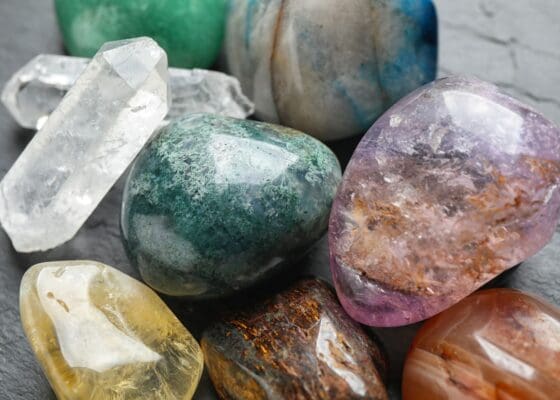
After hours of diligent searching, when you finally hold a gem in your hand, the sense of accomplishment is unparalleled. But the journey doesn’t end there. Properly handling, cleaning, and preserving your finds is crucial. Here’s a comprehensive guide to treating your Georgian gems with the care they deserve:
- Gentle Cleaning: Once you’ve unearthed a gemstone, resist the temptation to vigorously rub it clean. Instead, use a soft brush (like an old toothbrush) and lukewarm water to gently remove dirt and sediment. For tougher grime, a mild dish soap can be introduced.
- Identifying Your Gems: Not all that glitters is gold, and not every shiny stone is a gem. Invest in a good gemstone identification book or consult with experts at gem and mineral shows. Knowing what you’ve found enriches the experience and helps you determine the stone’s value.
- Storing Your Finds: Gemstones, especially when raw, can be fragile. Store them in individual soft pouches or in compartments to prevent them from knocking against each other. Plastic boxes with segmented compartments are perfect for this.
- Lab Assessment: If you believe you’ve stumbled upon something truly valuable, consider getting it assessed at a gemological laboratory. This will provide insights into the stone’s authenticity, quality, and potential value.
- Cutting and Polishing: Some gemstones reveal their true beauty when cut and polished. If you’re considering this step, ensure it’s done by professionals. Georgia has several gem-cutting establishments renowned for their craftsmanship.
- Documenting and Labeling: Keeping a record of where and when you found each gemstone can be invaluable, especially if you’re considering making gem hunting a regular hobby. Attach labels to each storage compartment or maintain a log.
- Handling with Care: Even tough gemstones like diamonds can be chipped or scratched if not handled correctly. Always pick up gems by their edges and avoid touching their faces, as oils from fingers can smudge them.
- Exhibiting Your Treasures: If you’re proud of your finds, consider buying a display case. Displaying your gemstones not only adds a touch of natural beauty to your living space but can also be a great conversation starter.
- Insurance Considerations: For particularly valuable finds, you might want to consider adding them to your homeowner’s insurance or getting a separate policy.
- Continuous Learning: The world of gemstones is vast and ever-evolving. Join gem and mineral clubs, attend workshops, and stay updated with gem-related literature. The more you know, the better you’ll become at identifying and valuing your finds.
In essence, the discovery of a gem is just the beginning. By giving your finds the care and attention they deserve, you can ensure they remain timeless treasures for generations to come.
Famous Gemstone Finds in Georgia
Georgia’s landscape, rich in geological wonders, has unveiled numerous sparkling treasures over the years. The state’s history is dotted with incredible gemstone discoveries, some of which have become legendary in the annals of gem hunting. Let’s embark on a journey through some of the most noteworthy gemstone finds in the Peach State:
- The Star of Georgia: One of the most celebrated finds in the state’s history, the Star of Georgia is a sapphire boasting a stunning star pattern. Weighing an impressive 50 carats, its deep blue hue and perfect asterism make it a gem lover’s dream.
- The Ellijay Emerald: Discovered near the town of Ellijay, this remarkable emerald crystal weighed over 1,600 carats in its rough state. While not the largest ever found, its clarity and rich green color placed it among the world’s most exquisite emeralds.
- Dukes Creek Gold: Georgia’s gold rush was triggered by significant discoveries around Dukes Creek. While not a gemstone, the sheer amount of gold found here, including some massive nuggets, cemented its place in gem hunting folklore.
- The Amethyst Giant: Unearthed in Jackson’s Crossroads, this amethyst crystal, weighing several pounds, dazzled enthusiasts with its deep purple hue and pristine clarity. It remains one of the most significant and finest amethyst finds in the region.
- Georgia’s Diamond: Though diamonds aren’t commonly associated with Georgia, there have been sporadic finds. One notable discovery was a beautifully clear, rough diamond weighing over 2 carats, reminding gem hunters that surprises lurk in the state’s terrains.
- The Dahlonega Mint: While not a singular find, the Dahlonega Mint stands testament to the sheer volume of gold extracted from the state. Between 1838 and 1861, this mint produced almost a million gold coins, underscoring Georgia’s role in the nation’s gold rush era.
- Blue Garnet Surprise: In a state not particularly known for garnets, a stunning blue garnet discovery took many by surprise. Its color shift property, transitioning from blue-green in daylight to purplish under incandescent light, made it a sensation.
- Turtle Logan Sapphire: Another significant sapphire find, the Turtle Logan, named after its finder, became renowned not just for its size but also its unique coloration, a tantalizing mix of blue and green.
- Georgiaite Meteor Gems: These rare green gemstones are believed to have been formed from a meteor impact millions of years ago. Their discovery added an extraterrestrial touch to Georgia’s gem hunting tales.
- The Hiddenite Enigma: Found in the northern parts of the state, a few hiddenite crystals, a rare green gemstone, have puzzled and excited geologists and gem hunters alike due to their unexpected presence in the region.
These legendary finds encapsulate the magic and mystery of Georgia’s landscapes, serving as an inspiration for countless gem enthusiasts. Each discovery tells a story of perseverance, luck, and the timeless allure of the state’s hidden treasures.
Additional Gem Mining Opportunities
The allure of gem hunting doesn’t stop at Georgia’s borders. Many neighboring states also boast rich gem-mining traditions and landscapes teeming with hidden treasures. Here’s a quick glimpse of what gem enthusiasts can expect:
- Alabama Gem Mining: The Yellowhammer State is a haven for star blue quartz, garnets, and hematite. The rich Appalachian region provides numerous opportunities for rockhounds.
- Tennessee Gem Mining: Renowned for its beautiful freshwater pearls, Tennessee also has a rich reserve of agates and jasper, especially in its eastern mountainous regions.
- South Carolina Gem Mining: Home to the famous “Eleanor Emerald,” South Carolina offers beryl, garnets, and amethyst in its Midlands and Piedmont regions.
- North Carolina Gem Mining: The Tar Heel State is famed for its emeralds, sapphires, and garnets, especially around the Spruce Pine area.
- Florida Gem Mining: While not a traditional gem state, Florida offers fossilized shark teeth, agatized coral, and calcite crystals, especially in its central regions.
While Georgia holds a special place in the hearts of gem enthusiasts, it’s evident that the Southeast U.S. is a veritable treasure trove, each state adding its unique sparkle to the gem hunting narrative. Exploring these states can only enrich one’s appreciation of the region’s geological diversity.
Enhance your gem mining knowledge by exploring our in-depth Gem Mining Near Me guide.
The Timeless Allure of Gem Hunting & An Exciting Alternative
Georgia’s rich geological tapestry and storied history of gem discoveries have long captivated both novices and seasoned gem hunters. The state, with its diverse landscapes from the Blue Ridge Mountains to the rolling Piedmont, provides a thrilling backdrop for those in pursuit of hidden treasures. Each excavation tells a story of patience, perseverance, and the sheer joy of unearthing nature’s buried jewels.
However, not everyone has the luxury of venturing into Georgia’s terrains, and that’s where an exciting alternative comes in. Introducing the “Home Gem Mining Kit,” a curated experience that brings the thrill of gem hunting to your doorstep. Designed for enthusiasts of all ages, this kit contains a mix of raw minerals and gems, allowing you to sift, pan, and discover, all from the comfort of your home. It’s a testament to the fact that while Georgia offers a unique gem hunting experience, the spirit of discovery knows no bounds.


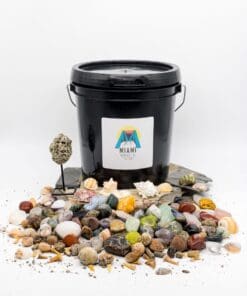
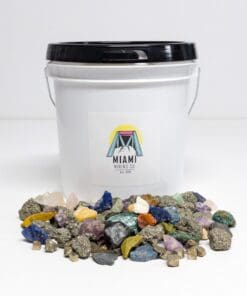
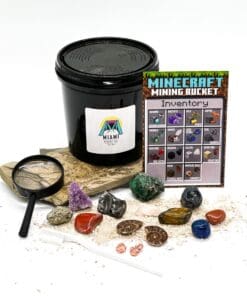
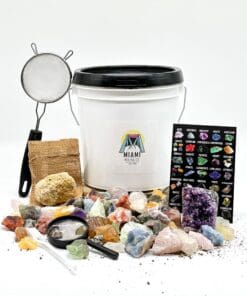
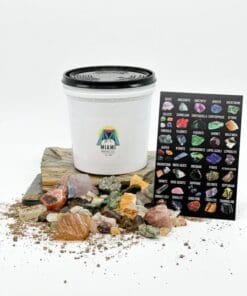
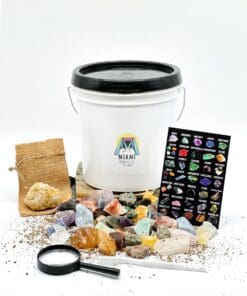
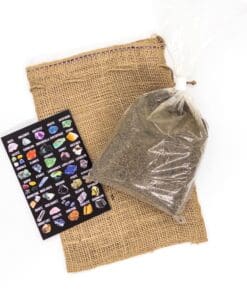
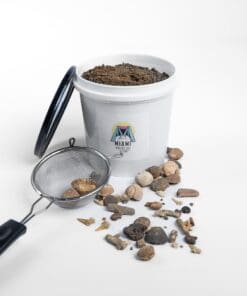
I found to believe a large smokey quartz crystal
Where did you find it?